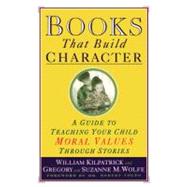
What is included with this book?
| Acknowledgments | 11 | (2) | |||
| Foreword | 13 | (4) | |||
|
|||||
|
17 | (11) | |||
|
28 | (10) | |||
|
38 | (8) | |||
|
46 | (9) | |||
|
55 | (6) | |||
| BOOK LIST | 61 | (218) | |||
|
65 | (26) | |||
|
91 | (17) | |||
|
108 | (22) | |||
|
130 | (6) | |||
|
136 | (13) | |||
|
149 | (47) | |||
|
196 | (18) | |||
|
214 | (28) | |||
|
242 | (37) | |||
| Appendix One: Book List at a Glance | 279 | (26) | |||
| Appendix Two: Twenty Great Children's Videos | 305 | (9) | |||
| Notes | 314 | (5) | |||
| Index | 319 |
The New copy of this book will include any supplemental materials advertised. Please check the title of the book to determine if it should include any access cards, study guides, lab manuals, CDs, etc.
The Used, Rental and eBook copies of this book are not guaranteed to include any supplemental materials. Typically, only the book itself is included. This is true even if the title states it includes any access cards, study guides, lab manuals, CDs, etc.
Just as a child learns from real experiences, he can also learn from vicarious ones-and far more safely. Through books he can experience revelations that might not come to him until much later in the normal course of events: revelations of fear, of failure, of love, of understanding. What's more, reading provides a sort of mental rehearsal for the time when he encounters these experiences firsthand.
Here are some practical suggestions for sharing books with children:
Copyright © 1994 by William Kilpatrick, Gregory Wolfe, and Suzanne M. Wolfe.
Excerpted from Books That Build Character: A Guide to Teaching Your Child Moral Values Through Stories by William Kilpatrick
All rights reserved by the original copyright owners. Excerpts are provided for display purposes only and may not be reproduced, reprinted or distributed without the written permission of the publisher.